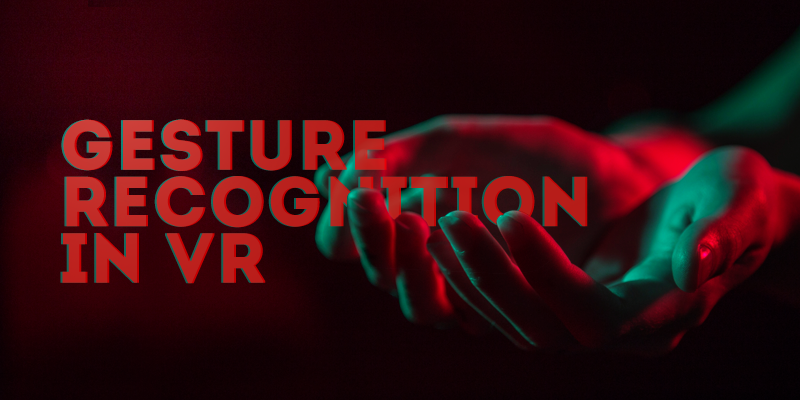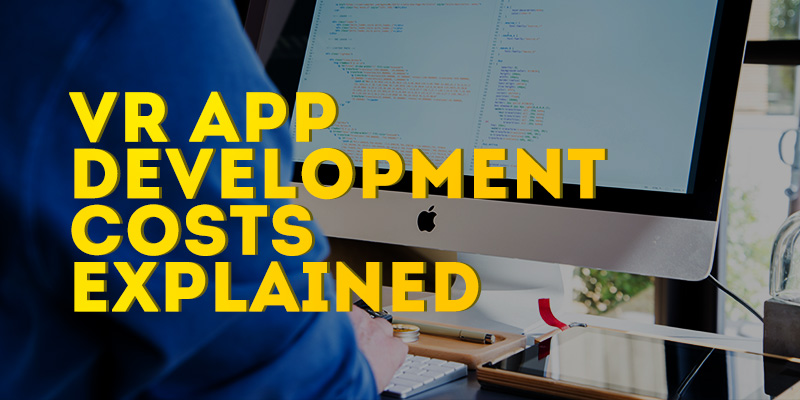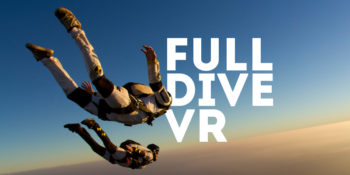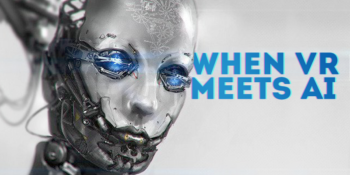In the current era, there exist, not one but several interfaces that have created intuitive and natural ways of human-computer communication. With the increase in computational developments and technical knowledge, the concept of interaction between mechanical devices and humans has enriched exponentially and given way to very sophisticated technologies.
Once limited to voice and speech recognition and control, these techniques have now evolved towards movements, positions, and gestures of hands.
Commonly referred as the gesture recognition technology, it is a breakthrough for hybrid realities which bridge the gap between the real and the virtual, taking the world of VR development to unparalleled heights in the IT sector.
What is Gesture Recognition?
Gesture describes any physical movement for non-verbal communication which may be intended to transfer a particular message to another person, or in this case, a computer. Gesture origination can be from face or hands. They can be performed by either one or both the hands and may be categorized as controlling conversational, communicative or manipulative hand gestures. By that standard, gesture recognition is said to be the interpretation of said movements by motion sensors, accelerometers via various mathematically applied computer algorithms. This is a form of perceptual computing which allows humans to execute commands based on the gestures recognized by the devices they wish to control.
How Does it Work?
Three-dimensional GRT is used for the diverse range of applications including but not limited to video games and entertainment, medical training and stimulation, and even therapy. However, one of the one prominent applications of gesture recognition is in virtual and augmented reality environment systems.
The Importance of GR in VR – The Why
Virtual reality and immersive reality systems are computer generated environments which replicate a scenario or situation, either inspired by reality or created out of imagination. These reality systems, often called hybrid realities allow the stimulation of the user’s physical presence via user interaction and movement to create an all-encompassing sensory experience.
This may include the senses of sight, hearing, touch and even smell.
The interaction of a user with a VR environment is limited to the use of various devices or VR head mounted displays which often require the use of pointing devices.
However, for virtual reality, commanding devices which can be manipulated unseen are much preferred for example voice commands, lip reading, interpretation of facial expression and recognition of hand gestures.
Gesture recognition technology which distinguishes and identifies hand and body movements is what allows the use of gestures formed for navigation and control within the virtually created environment. The gesture interface is what eliminates the various mechanical devices which are stressing for the user physically as well as mentally. It removes the middle man so to speak to create a direct human-computer connection.
Applying GR Technology to Virtual Reality
A virtual reality environment is truly believable for the user when it offers a completely immersive experience. This means replicating even the tiniest movement, vibration and change in dimension and direction of the real world in an artificially created space.
While there are a number of different factors which help shape a successful VR environment, mastering one skill, in particular, is considered paramount by the developers and IT professionals dedicated to this sector – that is Sensor Management.
While we’ve extensively talked about the disciplines of success for VR development in another post – you can read all about it here – we’d like to reiterate just how important sensors and their management is for virtual reality.
The sensors which monitor, control and replicate natural movement such as in gesture recognition technology include accelerometers and gyroscopes amongst various others. These little mechanical devices are responsible for measuring and recording the acceleration, orientation, rotation as well as the most minuscule of horizontal and vertical movements so that electronic applications are able to recreate the world as we know it. It is with these devices combined with the processing of complex computational algorithms and the expertise of highly proficient professionals that gesture recognition applies to VR systems.
Even then, designing a three-dimensional software with VR gesture control is no small feat. It requires the right research along with complimentary engineering to make this new interface fully functional. Though a multitude of steps are involved in making that happen, there are four main stages for hand gesture recognition.
They include:
- Data Acquisition Or Gesture Image Collection Stage.
- Gesture Image Preprocessing Stage.
- Image Tracking Stage.
- The Recognition Stage.
This is the stage for input data collection where hand, body or face gestures are recorded and classified.
This step uses techniques such as edge detection, filtering, and normalization in order to capture the main gesture characteristics. It fits the input gesture into the model used for gesture recognition.
Image tracking follows gesture image pre-processing where the sensors capture the orientation as well as the position of the object performing the gestures. This may be achieved with the help either one or multiple trackers such as magnetic, optical, acoustic, inertial or mechanic.
Last but not the least, there comes the recognition stage which is oft considered the final phase of gesture control in VR systems. After a successful feature extraction following the image tracking where the identified features of a gesture are stored in a system using complex neural networks, or decision trees, the command or the meaning of the gesture is declared. The gesture is officially recognized, and the classifier can attach every input of a test movement to its gesture class.
This process of gesture recognition is applied not only in VR 3D environments for realistic manipulation but also in games that allow users to control and orient the various interactive objects within the spectrum. Moreover, it is also used in sign language interpretation.
How Much Does It Cost to Develop a VR App?
By the time the bells ring out signaling the start of a new year, the total number of VR users will exceed 43 million. This is a market on the move, projected to be worth $30bn by 2020.
The Devices Used for Gesture Recognition – The What
Gesture recognition can be achieved with the use of various tools and input devices. They are broadly classified into three main types which include:
- Sensor based
- Glove-Based
- Vision Based
Sensor Based Gesture Recognition
Sensor based gesture recognition is achieved by the use of input devices which utilize accelerometers, gyroscopes and various other micro-electro-mechanical systems for movement measurement and processing. These sensors control and improve the acceleration along three axes as well as improve the rotating movements of the objects in a virtual environment. These sensors are oft accompanied by illumination and optical proximity sensors. AudioCubes, Wii Remotes or the Myo armband’s are great examples of applications which make use of sensor based gesture recognition.
Glove Based Gesture Recognition
Glove based gesture recognition is the implementation of this technology which makes use of a glove-like device very commonly made use of in virtual reality environments. The gloves, wired with multiple inertial as well as magnetic tracking devices can provide data input to a computer about the rotation motion and the position of the hands. These gloves can even detect the bending of fingers to a high accuracy for close replication of hand movements.
Vision-Based Gesture Recognition
Vision-based gesture recognition is the use of images or videos to replicate real life movement in virtual reality systems. These images or video sequences are processed to identify postures and hand gestures which may then be utilized for the computational generation of a three-dimensional model of that particular scenario.
Vision based gesture recognition is accomplished by the use of either a single, 2D standard camera or two different cameras with known relations to each other known as Stereo cameras for accurate 3D representations of gestures and movements. For an even better approximation of a real-life scene at short range, specialized, depth-aware cameras may also be used such as the time-of-flight camera or the structured light camera.
How Can AppReal-VR help?
Gesture recognition technology is the turning point in the world of VR/AR development. It can allow seamless non-touchable control of computerized devices to create a highly interactive, yet fully immersive and flexible hybrid reality.
The inclusion of this technology in multiple applications across various sectors is further revolutionizing the human-computer communication. That said, gesture recognition is no novice’s game.
It’s a fully integrated, highly advanced technology that requires specialized skills of individuals with relevant experience that can guarantee favorable results. AppReal-VR is a development company with the resources, talents, and expertise of over 200 extremely proficient and dedicated professionals who can recognize and understand your requirements and successfully deliver to your expectations. AppReal-VR can help you realize your VR goals and make them a reality.






